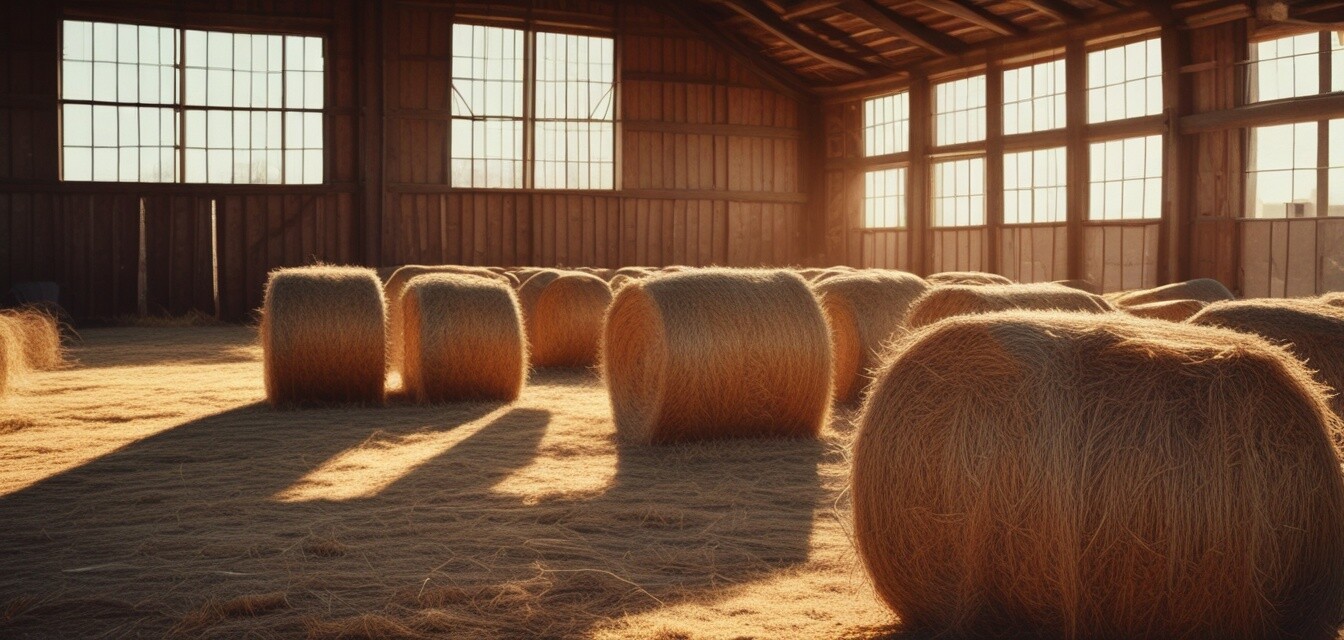
Understanding hay quality: What you need to know
Key Takeaways
- Assess hay quality based on color, texture, and smell.
- Check for mold, dust, and foreign material before purchasing.
- Know the nutritional needs of your horse to choose the right hay type.
- Proper storage is essential to maintain hay quality over time.
- Consider the hay's source and how it's been handled.
When it comes to horse nutrition, hay is one of the most critical components. Understanding hay quality is essential for providing your horse with the best possible diet. In this guide, we will explore the factors to consider when assessing hay quality, along with some important tips on purchasing and storing hay effectively.
What is hay quality?
Hay quality refers to the nutritional value and overall condition of the hay being offered to horses. Good quality hay will contain the right balance of nutrients, including proteins, carbohydrates, vitamins, and minerals, that are essential for your horse's health. Additionally, the physical characteristics like color, smell, and texture play a huge role in indicating hay quality.
Key factors in assessing hay quality
Before purchasing hay, consider the following key factors that can impact its quality:
- Color: High-quality hay generally has a bright green color, indicating that it has been harvested at the right stage. Dark brown or yellow hues often indicate age or poor storage.
- Texture: The hay should be soft and pliable. Stiff, brittle hay is often older and may not offer the same nutritional value.
- Smell: Fresh hay has a pleasant, sweet smell. If the hay smells musty or moldy, it is likely not safe for feeding.
Visual indicators of hay quality
Below is a table summarizing the visual indicators you'll want to assess when evaluating hay quality:
| Indicator | What to Look For |
|---|---|
| Color | Bright green indicates good quality; brown/yellow may indicate poor quality. |
| Texture | Soft and pliable is best; brittle and stiff may be lacking nutrients. |
| Smell | Sweet and pleasant is good; musty or moldy is bad. |
Potential issues to avoid
When choosing hay for your horse, it’s important to avoid problems that can arise from poor-quality hay. Here are some issues to keep in mind:
- Mold: Moldy hay can cause respiratory issues and other health problems in horses.
- Foreign materials: Watch out for weeds, dirt, or debris that can disrupt your horse's health.
- Dust: Excessive dust can also trigger respiratory issues; pay attention to how the hay looks and feels when handled.
Nutritional needs of horses
Understanding your horse's specific nutritional needs is crucial when selecting hay. The type of hay you choose should align with your horse's age, health, activity level, and dietary requirements. Here’s a brief overview:
| Horse Type | Nutritional Needs |
|---|---|
| Senior horses | Soft, palatable hay for easy chewing and digestion. |
| Performance horses | High-quality forage for energy, and potentially higher protein content. |
| Young horses | Balanced nutrients to support growth and development. |
Storage considerations for hay
Proper storage is essential to maintaining hay quality over time. Here are some storage tips:
Storage tips
- Store hay in a dry, cool area away from direct sunlight.
- Use tarps or coverings to protect hay from rain and moisture.
- Avoid storing hay directly on the ground; use pallets or platforms to keep it off the soil.
- Inspect stored hay regularly to check for mold or deterioration.
Where to purchase hay
When looking for hay, consider purchasing from reputable sources. Here are some tips:
- Visit local farms and suppliers to assess their hay quality directly.
- Ask for references or reviews from other horse owners.
- Check online directories or local classifieds for listings.
For further insights into choosing the right horse supplies and tack, be sure to check out our horse supplies and equestrian gear sections.
Conclusion
Understanding hay quality is essential for optimizing your horse’s nutrition. By assessing factors such as color, texture, smell, and potential issues, you can select the right hay for your horse. Additionally, proper storage and understanding your horse's nutritional needs will help ensure that your chosen hay maintains its quality. Armed with this knowledge, you can make informed decisions when purchasing and storing hay for your horse.
